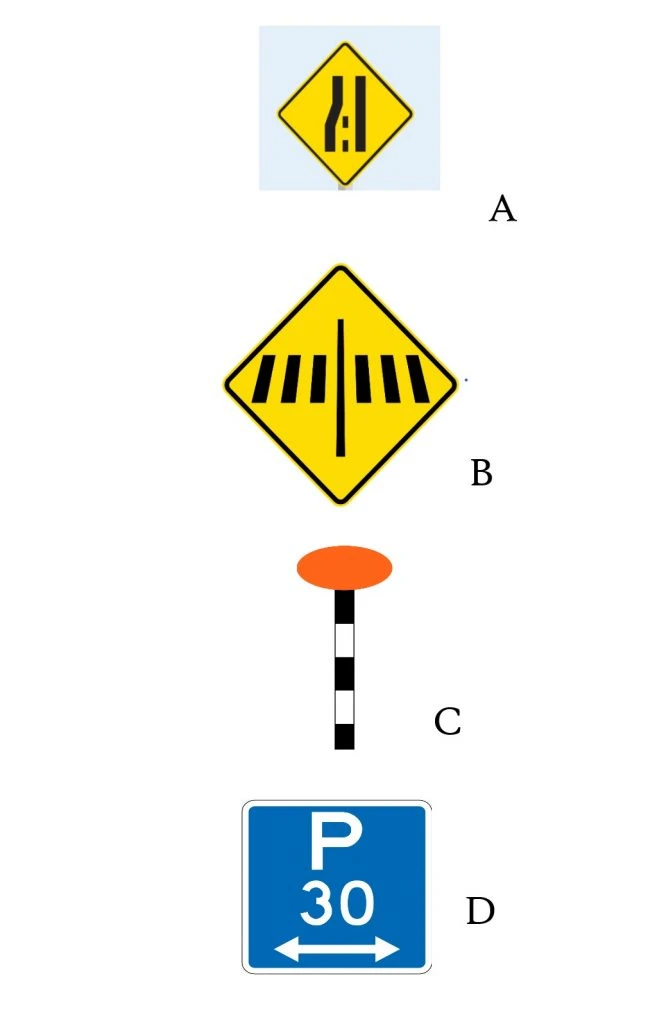Weird Stuff
New South Wales and New Zealand: Spot The Difference

Thinking of heading across the ditch to New Zealand this winter for a spot of skiing or sightseeing, picking up a rental car so you can travel according to your own fancies? If you’re heading over from New South Wales, you’ll find that although a lot of things are the same when driving in New Zealand compared with back home, there are quite a few sneaky little differences that might trip you up. Most of the road rules and road signs will be familiar, but some aren’t and some are nonexistent. Here’s a handful of some differences you might notice:
Even in the middle of what passes for a city, there’s way less congestion. In the busiest parts of town during rush hour, you’ll get some congestion, but nothing like you’ll find in the middle of Sydney.
People don’t honk the horns half as much. OK, someone might honk if the driver at the front of the queue is naughtily on their phone or daydreaming and doesn’t notice that the light has turned green, but drivers seem more patient in, say, Christchurch than they are in Sydney and will jump on the horn a lot slower.
You don’t get handy “merge ahead” signs. Instead, you get Sign A in the diagram below. The idea is to “merge like a zip”, left-right-left-right, etc.

Pedestrian crossing (zebra crossing) signage is different. The familiar sign with the pair of walking legs isn’t on the zebra crossing itself, and you don’t get the zigzag road markings leading up to the crossing. Instead, you get the warning sign (Sign B), with an orange dot on a stripy pole on the crossing (Sign C).
Pedestrian refuge islands aren’t signed. This means that at any time a centre island divides two lanes of traffic, there could be a lurking pedestrian hoping to cross. Keep your eyes open (and the pedestrian will be doing the same). Refuge islands with designated cut-downs for pedestrians are common near roundabouts.
Parking limits are in minutes, not hours. If you got all excited about a sign saying “P5” or “P15”, believing that you’d be able to park there for 5 or 15 hours, I’m sorry to disappoint you. You’ve only got 5 or 15 minutes. If you’re lucky, you can find signs giving you 90, 120, 180 or 240 minutes of parking (if you look hard enough), meaning 1½ hours, 2 hours, 3 hours and 4 hours, respectively. Sign D is a typical example.
If you’re in an urban area, the speed limit is probably 50 km/h. There aren’t as many 60 km/h sections. Local traffic areas don’t exist, so assume that it’s 50 km/h unless told otherwise.
Even on the motorway, you won’t get to go 110 km/h legally. At the time of writing, the Kiwi Powers That Be are discussing the introduction of 110 km/h sections on some main motorways. However, this is still in the discussion stage, so if you head over this winter, you’ll have to keep your speed to a maximum of 100 km/h when in rural areas.
School zones don’t have the times handily displayed. If the signs are flashing, the reduced speed limit (either 30 or 40 km/h) applies; if they’re not flashing, the usual speed limit (usually 50 km/h) applies.
Speed cameras are sneaky. Permanent ones – and there are some – don’t have warning signage. There have been calls from lobby groups to introduce signs warning you that there are permanent speed cameras in position, but there aren’t any yet. You may, however, see some signs warning you about red light cameras. NZTA has taken to calling both speed cameras and red light cameras by the twee name of “safety cameras” but the majority of Kiwi think this is a cringeworthy attempt to not call a spade a ruddy spade. The NZTA Journey Planner website has a map showing you where the mobile ones are, so check this when you plan your journey (it’s a good idea to check it even if your right foot isn’t on the heavy side, as it will also tell you if roads have been closed or if there are major roadworks underway).
Witches’ hats everywhere. The roading contractors just LOVE witches’ hats and will put up heaps of them even weeks before the actual road works take place, and these will probably be the last thing they take away. They’ll also start appearing up to 1 km ahead of the road works (in rural areas). They’ll also put up insane numbers of the things. I have no idea what they’re thinking. Do they think that if there’s a car-sized gap in the middle of a long row of witches’ hats that I’m going to decide to cross the line? Incidentally, not many Kiwis will use the word “witches’ hat” but will call them a “road cone”. Near universities, you may spot some in unusual places, such as up trees.
A Rally With A Difference that Makes A Difference

Bendigo to Pooncarie to Milparinka to Innaminka to Betoota to Isisford to Beylando Crossing and then to Townsville; now that sounds like an insane adventure! It’s an adventure just waiting for you to register, and it’s an adventure you could be on during 18th–26th October in spring 2024. Then there’s another one in autumn 2025. Are AWDs, 4WDs or any buses allowed on this rally? No, only vehicles with 2WD can be entered.
But that’s nuts! Yes, but it’s also a blast. These car rallies have been happening for quite some time now, and they were first brought into being by James Freeman. He is somewhat of a legend round these parts, as, sadly, James lost both of his parents to cancer just 12 months apart from each other. This was devastating and a really heavy burden for James to carry, as you can imagine, but James and his family nursed their parents through the last stages of their lives. In order to bounce back on top of things and to help him to make a difference, he carefully planned and instigated the first Shitbox Rally. The Shitbox Rally is a car rally that is all about having fun while raising money for cancer research.
Can I enter a new car that I buy from Private Fleet? No way! There is a $1,500 car value/budget rule, and it is the main rule that the Shitbox Rally organizers have stipulated. There are “penalties” for any cars not meeting the criteria! But yes, you can decorate your car. The crazier the decorations the better, and this is a big part of the rally’s fun. Just the bonnet and two front doors are needed for the rally sponsors’ and organiser’s stickers, so these are the areas you need to keep clear.
You do not have to have had a run in with cancer to enter the Shitbox Rally, but the truth is that many of the entrants have been affected by cancer in one way or another, whether it be from losing parents, family, or close friends from cancer; or people that they know of that have battled or are battling cancer. This car rally is all about raising awareness and money for the Cancer Council, but it is also about wanting to offer support and a friendly ear to those that have suffered or are suffering.
This sounds like my favourite sort of motorsport. This is not so much a race, but rather a challenge to achieve the unthinkable. That is to drive cars worth just $1,500 across Australia via some of its most formidable roads; and it’s all in the name of charity. I might see you there one day, as I line up in an old BYD Dolphin at the starting line of the mighty Shitbox Rally (at some point in the future, because these cars are brand new to the market at the time of writing). That might not go so well because I don’t think there’s many charging stations out there!
If you race me to the Shitbox Rally, then you’ll definitely have first bragging rights. What a blast!
Visit the official website at
https://www.shitboxrally.com.au/

Talking Tyre Tech

Wheels, alloys, and tyres are pretty mesmerizing things. My mate’s dog thought they were biteable too, especially when moving. He did manage to learn, eventually, that this wasn’t the smartest thing to do, and rather spent his time running alongside the car to welcome visitors instead.
The wheel has been around for a wee while now, having first been thought to have been applied particularly well by the Sumerian people in 4000 BC, in the lower Mesopotamian regions, or what we know as modern-day Iraq. These folk inserted rotating axles into solid discs of wood to move objects from A to B. In 2000 BC, the discs began to be hollowed out to make a lighter wheel. Nowadays we use wheels for all sorts of applications, not least for rolling ourselves from Point A to Point B in cars.
I’m sure that the thought of using something soft for surrounding a wheel’s rim entered the mind of many an inventor or entrepreneur. However, in 1847, it was the Scottish inventor Robert Thomson who patented the first standard pneumatic tire. It wasn’t until 1888 that the first pneumatic tyre, made by John Dunlop (yes, as in Dunlop tyres), was able to be used as a practical application for bicycles. He found that rubber was able to withstand wear and tear and retain its resilience when being used as a bicycle tyre.
The tyre as we know it now has advanced tremendously in its science, physiology, and even application. Generally, a new tyre that we use on our cars today may contain up to 25 components and have as many as 12 different rubber compounds. Rubber still comes from the rubber tree (Ficus elastica), where the basic component (liquid latex) is extracted from the tree and coagulated with acid. It is then cleaned with water and pressed into bales, ready for all sorts of applications, including the tyre.
New developments in tyre technology have been rather underwhelming recently; that is, until Michelin’s latest invention. This exciting development by Michelin has potentially seen the pneumatic tyre being replaced by this new tyre technology. The new Michelin Uptis tyre technology utilizes a non-pneumatic tyre that relies on modern composites. The Michelin Uptis uses aluminium for the wheel, a combination of rubber for the tread, and a flexible load-bearing structure made from reinforced plastic with glass fibre that is used as the tyre’s substance for cushioning road imperfections on impact and coping with variable weight forces, while also maintaining the tyre’s rigidity when accelerating, braking, and cornering.
This ‘substance’ as we know it in a conventional tyre is known as compressed air and the tyre wall, which all work together to maintain grip and the tyre’s structural strength, and to soften road undulations. It is, however, prone to punctures. So, instead of simply air pressure providing the right mix of stiffness, flexibility, and durability, like on our conventional tyres, the new Michelin Uptis prototype tyre uses clever yet simple new technology that will even eliminate the hassle of having a puncture.

Michelin has recently said that this new tyre technology could also help reduce the cost of tyre replacement by up to 20%. Michelin’s Uptis tyre technology has and is being tested, having been fitted to 50 DHL delivery vans in Singapore last year.
Michelin Uptis tyres look pretty cool, too, because you can see right through the outer sidewall of the tyre to the other side and beyond, thanks to all the vacant spaces between the incredibly tough and elastic plastic pillars holding the integrity of the tyre together.
Fahrvergnügen

Given that the car was more or less invented in Germany, and given that German is a language in which you can create compound words with subtle and complex meanings, it’s not surprising that there’s a German word that all true drivers can relate to, even if we’ve never come across the word before or if we don’t speak German. This word is “fahrvernügen”, which means something like “the pleasure of driving” or “the joy of travelling”.
OK, to be fair, the word isn’t a traditional one, and it was probably coined in the 1990s as part of a Volkswagen ad campaign that ran in the US. However, that was around 30 years ago (feeling old now?) and just because a word was made up for advertising purposes doesn’t mean that it’s not legitimately part of the vocabulary, especially when it’s a useful term that describes an everyday activity or need. By way of comparison, fahrvergnügen is older than the English verb “to google” and nobody will challenge the idea that “google” is a legitimate verb. As far as I can work out, fahrvergnügen is an official German word.
And no wonder it’s become official, no matter how it entered the language. I’m kind of surprised that it wasn’t around before the 1990s, as it’s certainly a thing that most of us can relate to, no matter what language we speak. For some people, it’s the thrill of pushing down the throttle and feeling the acceleration and the blur of speed. For some, it’s the sideways G-forces as you put something with exquisite handling around a particularly curvy piece of road. For others, it’s the feeling of being in control. For others, it’s the combination of the car’s sound and personality. And for others, it’s just the satisfaction and pleasure of getting out of one’s usual surroundings and going somewhere else.
German has a few other words with no English equivalent that have their uses in the world of cars, driving and automotive topics that most drivers can relate to. Here’s a selection:
- Fernweh – a longing for far-off places
- Kabelsalat (literally “cable salad”) or a mess of cables, which is what you’ll be greeted with when trying to check the fuses or to install a new speaker in any modern car.
- Schilderwald (literally: “shield forest”): a street so full of signs that it’s more likely to make you lost and confused than otherwise.
- Schlimmbesserung: A tweak or update that was supposed to improve things but actually makes things worse. The related verb is “Verschlimmbessern”. I think we can all think of examples, but I’m not stupid enough to name them, even for the sake of schadenfreude (the pleasure of seeing other’s misfortune).
- Autobahn: I think we don’t have this one because we don’t have autobahns; we just have motorways that have set speed limits.
Just for the fun of it, other languages also have some words with no English equivalent that most drivers can relate to, like the following:
- Akihi (Hawaiian): to get instructions or directions, then forget them completely when you try to apply them.
- Gilchi (Korean): Someone who has a terrible sense of direction and gets lost all too easily.
- Resfeber (Swedish): that feeling of nerves, excitement and anticipation before a journey begins.
And what about that other German phrase we see frequently in the automotive world, namely Audi’s slogan of “Vorsprung durch Technik”? Well, this means something like “advancement/progress through technology” or “the technical edge” or “technological advantage”. In fact, Audi tried to get this phrase trademarked, but this led to a long and complicated court case – which is a good story for another time, to quote the Star Wars sequels.
Anyway, even if you never came across the original fahrvergnügen ad campaign, I’m sure that you’ve experienced the concept all the same. Tell us in the comments what makes up fahrvergnügen for you.